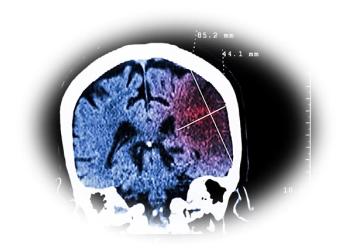
Fast Treatment of TIA Slashes Risk of Recurrent Stroke
PARIS -- Fast assessment and treatment of transient ischemic attacks can reduce the risk of early recurrent stroke by 80%, according to researchers here and in England.
PARIS, Oct. 9 -- Fast assessment and treatment of transient ischemic attacks can reduce the risk of early recurrent stroke by 80%, according to researchers here and in England.
Patients admitted to a 24-hour dedicated TIA clinic in Paris had a 90-day stroke rate of 1.24% compared with the predicted rate of 5.96%. Patients in the Oxford Vascular Study in England had a 0.20 hazard ratio for stroke at 90 days (95% CI 0.08-0.49, P=0.0001).
The studies were published online by Peter M. Rothwell, M.D., Ph.D., of Radcliffe Infirmary in Oxford, and colleagues, in The Lancet, and by Pierre Amarenco M.D., of Bichat-Claude Bernard University Hospital, and colleagues, in Lancet Neurology.
There is general agreement that there is about a 10% risk of major stroke in the 30 days following a TIA. That month provides a short window for stroke prevention, but "there is considerable variation in service provision, ranging from emergency inpatient care to non-urgent outpatient clinic assessment," wrote Dr. Rothwell and colleagues.
In Dr. Rothwell's 1,278-patient two-phase EXPRESS study 634 patients were recruited in phase 1 -- from April 1, 2002 through Sept. 30, 2004 -- and 644 in phase 2, which ran from Oct. 1, 2004 through March 31, 2007.
Of the total number of TIA patients enrolled in both phases, 607 patients were referred to the hospital, 620 for outpatient assessment, and 51 received no follow-up care. Five hundred and ninety-one -- 310 patients in phase 1 -- of the outpatient referrals were to the Oxford Vascular Study clinic.
Treatment protocol was aspirin for patients not already on antiplatelet therapy or clopidogrel (Plavix) if aspirin was contraindicated, simvastatin (Zocor), blood pressure medications as needed to lower systolic pressure to less than 130 mm Hg, and anticoagulation as needed.
In phase one the median time to clinic referral was three days, but that was cut to less than a day in phase 2 (P
Of patients with confirmed TIA, 17% had neuronal damage.
All patients with a confirmed TIA were immediately referred for stroke prevention. Patients were treated medically for hypertension and dyslipidemia. Moreover, 43 patients had urgent carotid revascularization, and 44 received anticoagulants to treat atrial fibrillation. Seventy percent of patients were sent home the same day as treatment at the TIA clinic.
In an editorial that accompanied Dr. Amarenco's study, Walter N. Kernan, M.D., and Joseph L. Schindler, M.D., of Yale wrote the real value of the study was not just the demonstration of the efficacy of rapid assessment and treatment of TIA, but the "demonstration that these services can be provided on a local level. Remarkable features of the model include outreach to community physicians, convenient 24-hour access, protocols for evaluation and management, and follow-up for pertinent clinical events such as stroke."
Naeem Dean, M.D., and Ashfaq Shuaib., M.D., of Royal Alexandra Hospital and the University of Alberta in Edmonton, echoed that sentiment in a commentary in The Lancet.
"Patients with TIAs and minor strokes are not disabled," they wrote. "If the risk of a disabling stroke can be substantially reduced in this population, we strongly recommend that patients should receive the same urgent attention as is provided for those with acute coronary syndrome."
Newsletter
Enhance your clinical practice with the Patient Care newsletter, offering the latest evidence-based guidelines, diagnostic insights, and treatment strategies for primary care physicians.


















































































































































































































































































